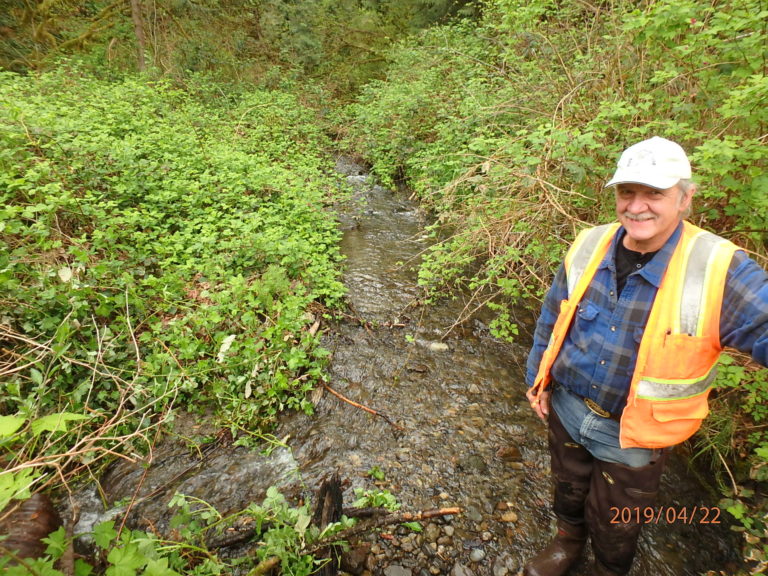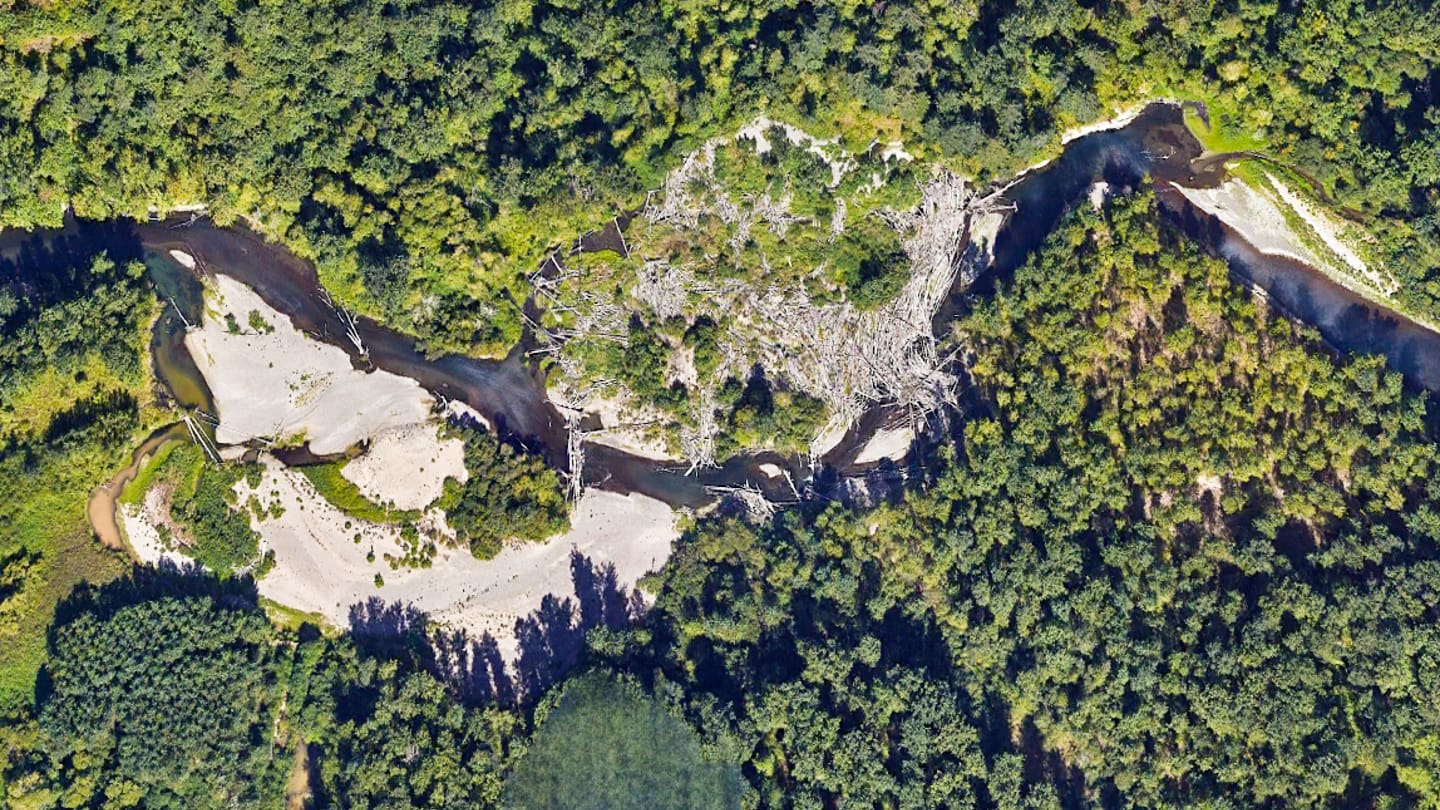

Old growth forests contributed massive pieces of wood to adjacent stream channels, often hundreds of feet long with large complex crowns and basal diameters in excess of 10 feet. These logs, called large woody debris (LWD) played a key structural role in regulating the formation of complex floodplain habitat by providing floodplain roughness elements, which force alluvial sediment storage and scour at the valley bottom scale, directing channel pattern. These logs also played an important role at a more localized scale. Instream LWD that is in contact with the river channel during low-flow river conditions provides complex rearing habitat for juvenile salmon. Large log jams are also often associated with deep pools, providing cover for adult salmon that are staging in a given reach before spawning.
Like most large floodplain rivers in the Puget Sound lowland, the Snoqualmie River has had a long history of LWD removal. Starting in the 19th century the Army Corps of Engineers removed wood from the Snoqualmie River for the purpose of improving navigability. Wood cutting crews would clear the channel of logs, using split cedar collected along the river to power their steam engine boats.
The Chinook Bend-Tolt reach of the Snoqualmie River is an important reach for both spawning and rearing for Chinook salmon. For this reason the reach has been targeted for floodplain reconnection and restoration projects. Despite these efforts, LWD loading in the reach is low relative to historic levels. Design considerations for the reach include boater safety, maximizing complex edge habitat in the reach, and structural stability in a large river environment.
This project addresses inadequate LWD loading and instream habitat conditions in the floodplain reaches of the Snoqualmie River from the Tolt River confluence to the Harris Creek confluence in the Stillwater Wildlife Unit. This area includes some of the most productive spawning reaches in the Snoqualmie River, where known Chinook spawning occurs annually. Numerous large-scale floodplain restoration projects have occurred in this reach over the last decade, however, post project monitoring shows that wood loading in the system is still < 5% of the median level and <1% for key pieces, when compared to similar sized reference rivers in Washington State.
Benefits of Wood in the River at reach scale:
The primary deliverable for this project will be conceptual designs for LWD placement in the project reach. We anticipate creating conceptual designs for at least three treatment sites within the greater project reach, these designs will be informed by the assessment of recreational boating in the reach. Additional deliverables will include stakeholder outreach meeting notes and minutes and public feedback received regarding recreational boating and habitat restoration in the project reach.
Location | Start Date |
|---|---|
Chinook Bend to Tolt River, Snoqualmie River Mainstem, Carnation | 09/01/2021 |
Project Type | Completion Date |
|---|---|
Watershed Assessment, Habitat Restoration | 09/01/2023 |
The goal of this project is to develop conceptual designs for instream LWD restoration treatments in the Chinook Bend -Tolt reach of the Snoqualmie River and satisfy community stakeholder concerns. If constructed, the designs will contribute to improved instream habitat conditions for salmonids in the project reach for the next 30-50 years.
Objectives:
Primary Habitats Impacted By Project: | Managing Agency/ Organization: |
|---|---|
Floodplain, Wetland, Estuary | Wild Fish Conservancy |
Project Contact: | Budget or Project Cost: |
|---|---|
Micah Wait | $116,758 |
Funding Sources: | Partners: |
|---|---|
Salmon Recovery Funding Board and King County Flood Control District (FCD) Cooperative Watershed Management (CWM) Grant Program | Natural Systems Design |